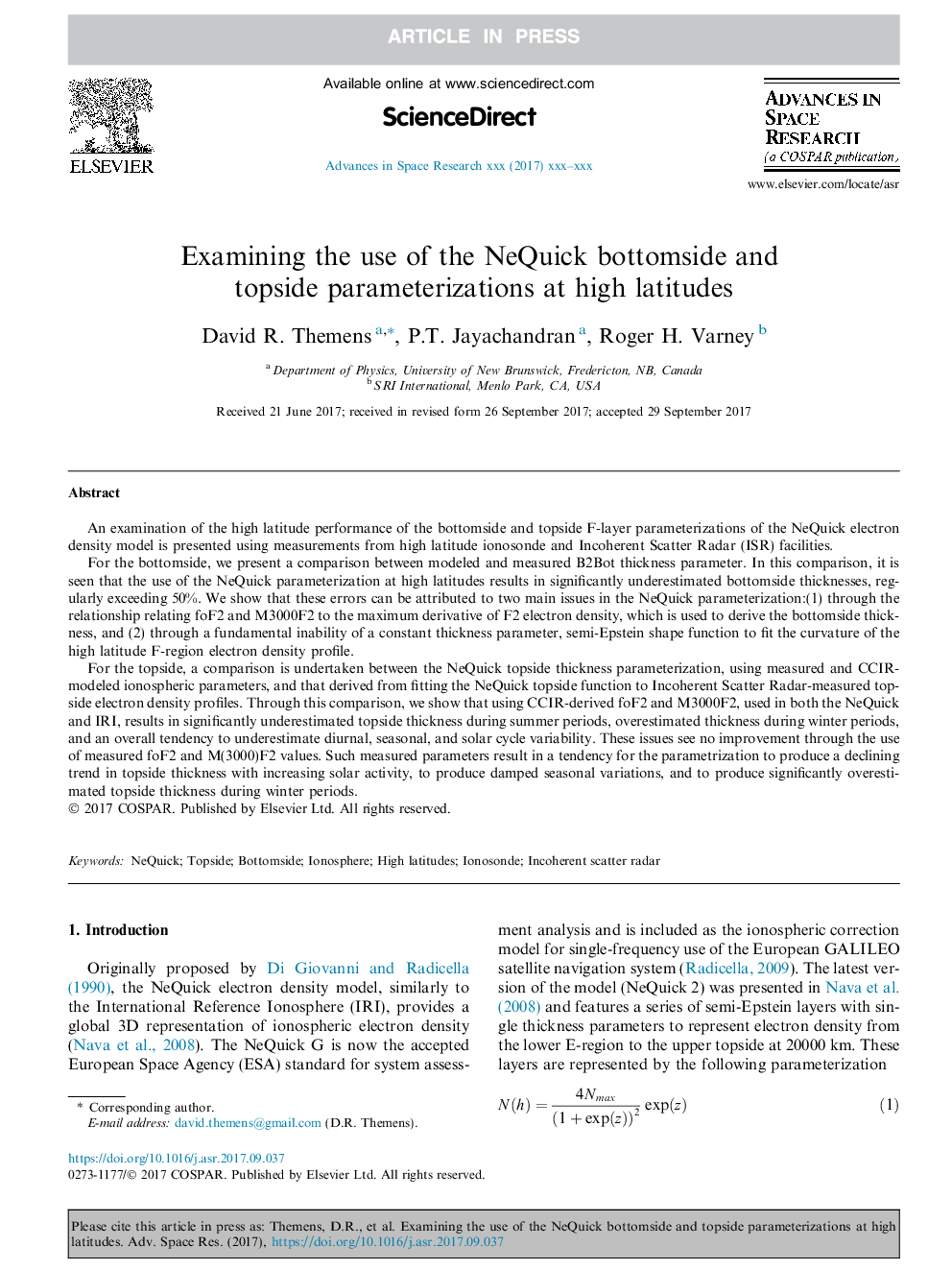| Article ID | Journal | Published Year | Pages | File Type |
|---|---|---|---|---|
| 8132417 | Advances in Space Research | 2018 | 8 Pages |
Abstract
For the topside, a comparison is undertaken between the NeQuick topside thickness parameterization, using measured and CCIR-modeled ionospheric parameters, and that derived from fitting the NeQuick topside function to Incoherent Scatter Radar-measured topside electron density profiles. Through this comparison, we show that using CCIR-derived foF2 and M3000F2, used in both the NeQuick and IRI, results in significantly underestimated topside thickness during summer periods, overestimated thickness during winter periods, and an overall tendency to underestimate diurnal, seasonal, and solar cycle variability. These issues see no improvement through the use of measured foF2 and M(3000)F2 values. Such measured parameters result in a tendency for the parametrization to produce a declining trend in topside thickness with increasing solar activity, to produce damped seasonal variations, and to produce significantly overestimated topside thickness during winter periods.
Related Topics
Physical Sciences and Engineering
Earth and Planetary Sciences
Space and Planetary Science
Authors
David R. Themens, P.T. Jayachandran, Roger H. Varney,
